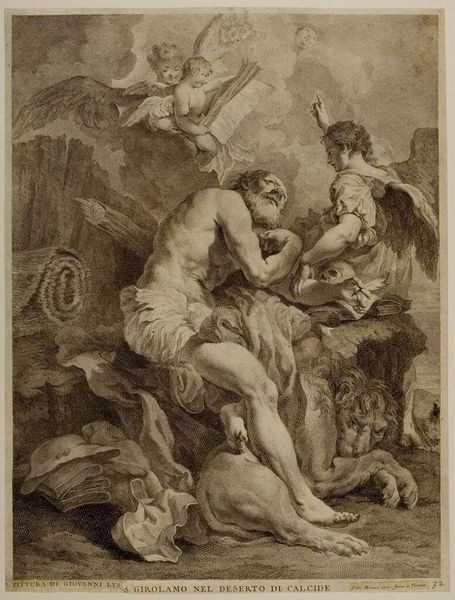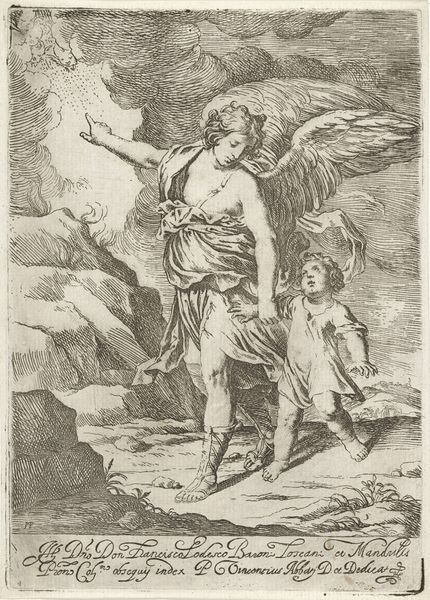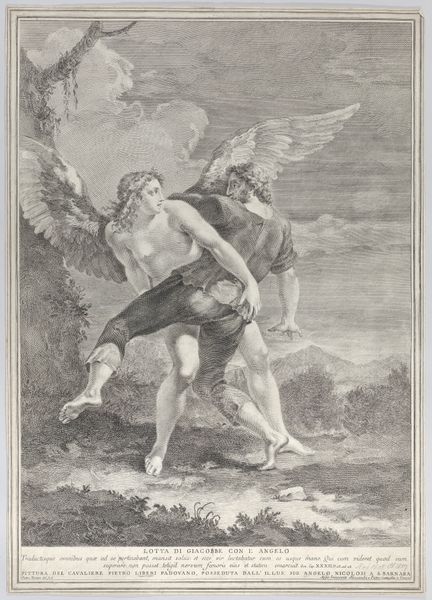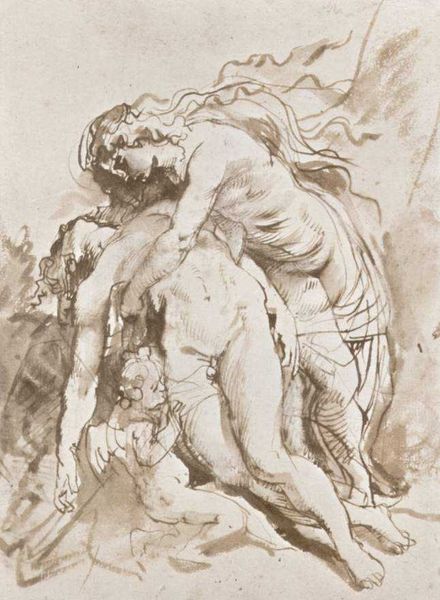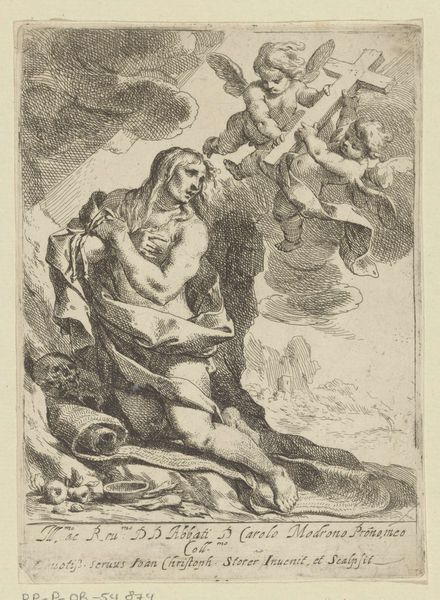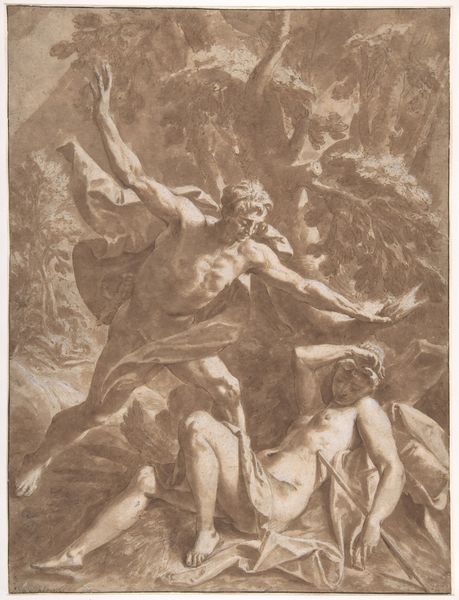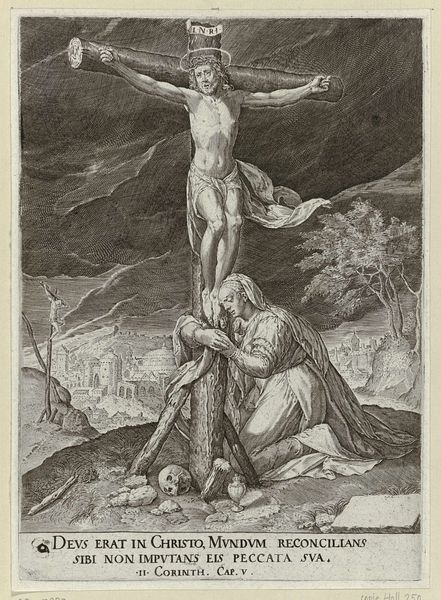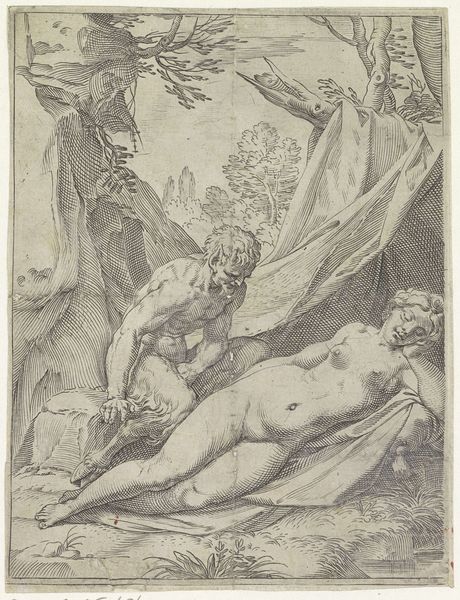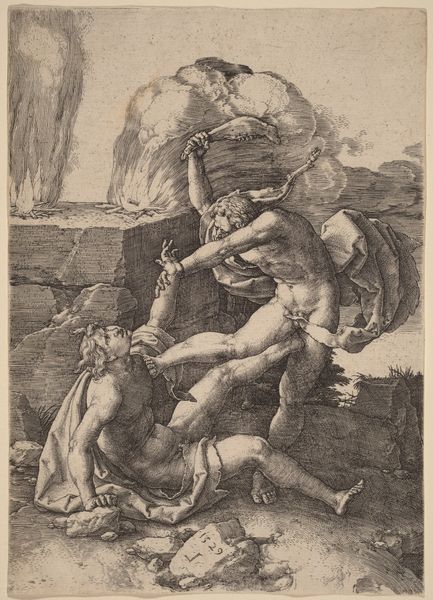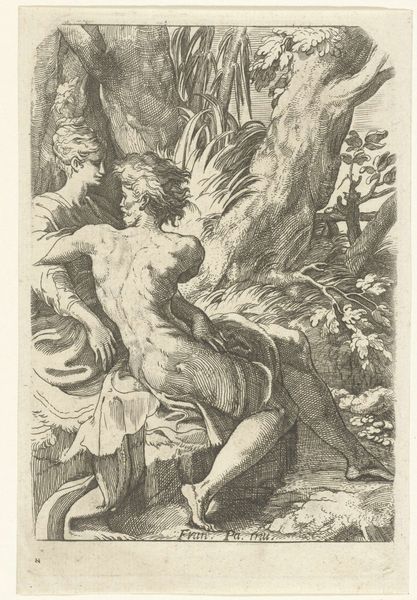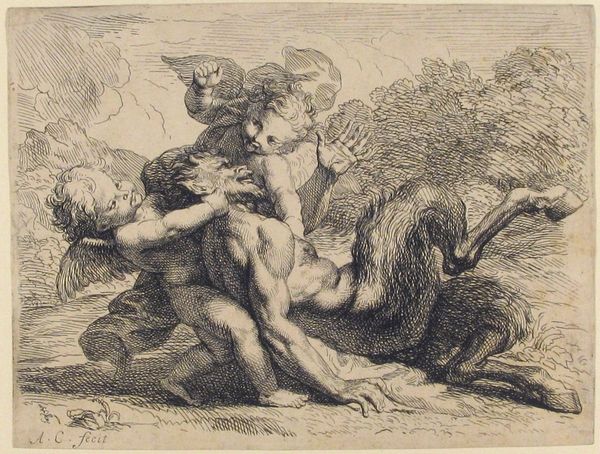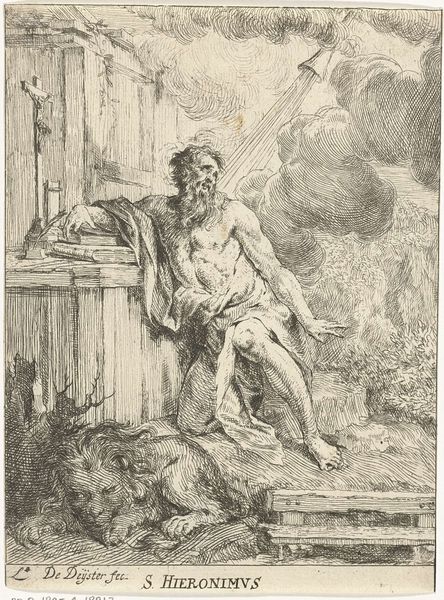
drawing, charcoal
#
drawing
#
charcoal drawing
#
figuration
#
romanticism
#
charcoal
#
history-painting
Copyright: Public Domain: Artvee
Curator: This powerful charcoal drawing from 1842 is titled "The Rejection of Cain’s Sacrifice" and is by Sir John Everett Millais. Editor: My initial impression is raw emotion, a theatrical depiction of despair. The looming figure on the left is engulfed by what looks like smoky rejection. There’s almost a theatricality to his pose, wouldn't you say? Curator: Absolutely. Millais, despite his later Pre-Raphaelite fame, displays here the grandiosity common in history paintings. This image would resonate deeply within Victorian society—illustrating divine judgment within a biblical narrative. The charcoal medium amplifies the drama. Editor: Charcoal, specifically, speaks volumes. The directness of the medium—the burnt wood transformed and applied. It perfectly underscores themes of labor, offering, and in Cain's case, deficient output. I also wonder, was the ready availability and cost-effectiveness of charcoal also a factor here, when considering how widespread depictions of religious themes were? Curator: Good point. Cheap materials allowed for more accessibility within a wider artistic milieu. Yet, the choice might have deeper resonance when linked to the artist's social contexts and Millais' aspirations within London’s artistic hierarchy and public expectations surrounding religious art at that moment. Editor: Consider how different media might soften the subject matter. Instead, he gives us almost unrefined textures... like tangible grief. Note the figure kneeling in what I take is pious observation; what function might that figure serve to someone in 1842 who came upon this? Curator: The contrast is stark. A counterpoint of faith versus the tangible presence of a forsaken man. These moral polarities are characteristic of didactic works aimed to reassert moral values during turbulent periods, when traditional foundations and hierarchies seemed to dissolve within industrializing England. Millais captures an era poised between religious devotion and nascent doubts. Editor: I keep being drawn to the raw materiality; a clear indicator of our own frailties, if such a thing can even be captured. I guess in viewing art it isn't really the artist's place that concerns me, or what social groups will see; but rather the physical substance of the medium and its immediate affects upon anyone who has the privilege to witness it, despite cultural moment or any perceived societal intention. Curator: An insightful divergence that reveals the complex intertwining of artistry, material, and the ceaseless shifts in societal meaning! Editor: Agreed; thank you for illuminating all the forces surrounding its construction!
Comments
No comments
Be the first to comment and join the conversation on the ultimate creative platform.
